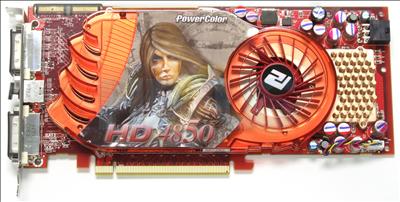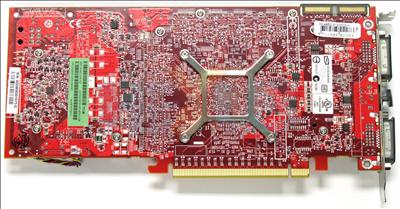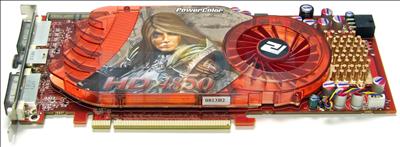Card appearance
Please take a look at our reference review to appreciate what makes the Radeon HD 4850 tick along.
From the front it's clear that PowerColor's HD 4850, like all currently
available HD 4850s, is based on the reference design.
Stickers on the fan and heat-sink assembly, and the inclusion of
protective covers for the CrossFire and video connectors, is all that
sets it apart from the current sea of reference cards.
The rear of the card is pretty spartan, all eight memory modules that make up the 512MiB of GDDR3 are located on the front of the card.
From this angle the single-slot profile is apparent. Despite
the slender cooler and fan, the card runs quietly thanks to low-ish fan
speeds - albeit at the expense
of quite high idle and load temps.
Hopefully a new BIOS should be forthcoming
that better ramps fan speeds to keep the card cool, without
significantly affecting noise levels.
A single six-pin PCIe connector, running from your PSU, is required to supply the card with power.
The HD 4800 series much like its predecessor supports two dual-link DVI
connections, both with HDMI passthrough and multi-channel audio
supplied by onboard codec. It has now been upgraded to support
7.1-channel sound. A TV output supporting component, composite and
S-video
rounds out the connectivity options.














